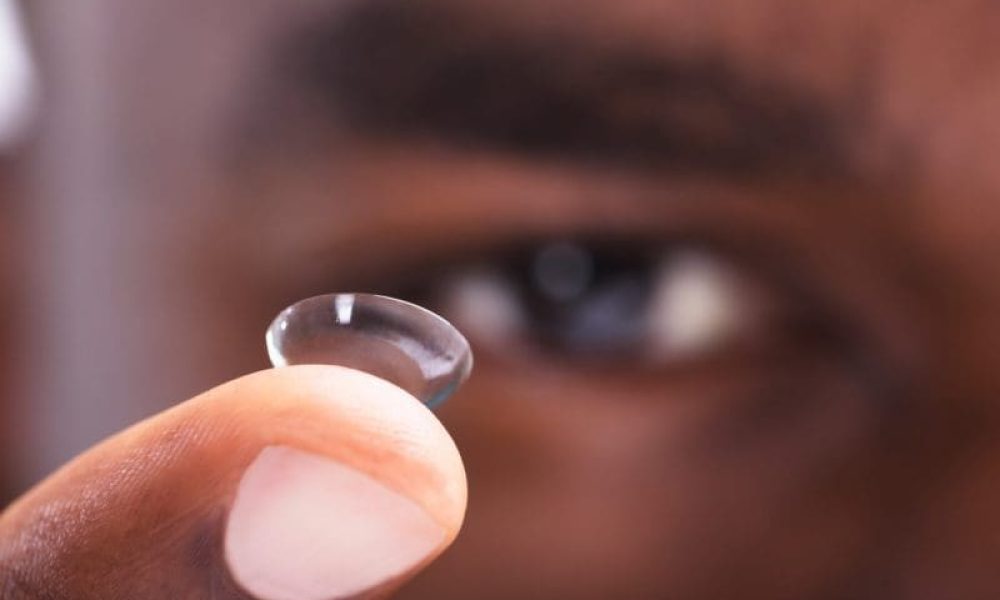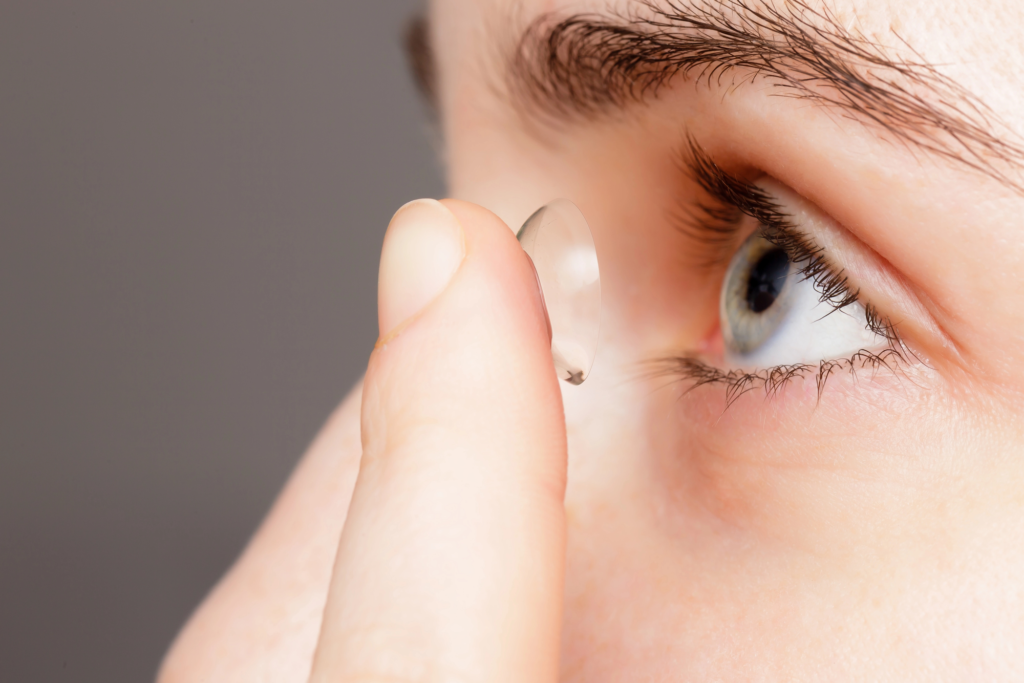Whether you’re considering them, or you’re a seasoned wearer, there’s one question you likely have about contact lenses.
Can a contact get lost in your eye?
The short answer is no, but everyday contact lens wearers experience situations where they’re certain they’ve lost a lens and it’s floating in the recesses of their eye.
We’ve put together the long answer to your questions about whether or not you can lose one of your contact lenses in your eye.
Take a minute and read our mini-guide. Then, sit back, relax, and put that lens back where it belongs—in your eye!
Stuck Contact Lenses
Before diving into the concept of lost lenses, it’s essential to understand how contact lenses can get stuck or dislodged. Here are common scenarios:
Rubbing the Eyes: Excessive rubbing, often due to dryness or allergies, can dislodge a lens and leave you feeling like there’s a contact lens stuck in your eye.
Inserting Inside Out: A contact lens inserted the wrong way can move around, leading to discomfort and the sensation of a contact stuck in your eye.
Makeup Removal: Vigorous eye scrubbing during makeup removal may accidentally dislodge a lens, creating a feeling similar to a contact stuck behind your eye.
Sleeping in lenses (not designed for overnight wear) can result in dryness, causing the lens to adhere and making it feel like a stuck contact lens.
Prevention Tips:
Follow proper care instructions from your optometrist.
Avoid excessive eye rubbing.
Ensure correct insertion of lenses.
Remove lenses before activities like makeup removal or sleeping.
Can a Contact Lens Get Lost in Your Eye?
Despite common fears, a contact lens cannot get lost behind your eye. Here’s why:
Conjunctiva: This thin, moist membrane lines the eyelids and prevents any foreign objects, including contact stuck behind your eye, from traveling behind your eye.
Lens Displacement: While a contact lens may shift or get stuck under your eyelid, it remains accessible and can be removed safely.
What to Do When a Contact Lens Feels Stuck
If you feel like you have a contact stuck in your eye, it’s important to stay calm and follow these steps:
Rinse Your Eye: Add moisture to your eye using saline solution or rewetting drops to help loosen the lens. Avoid using tap water as it can introduce harmful bacteria, increasing the risk of eye infections.
Locate the Lens: Gently lift your upper eyelid and look in the opposite direction of where you think the lens might be. If it feels like a lost contact in your eye and you can’t feel it, check under your eyelid with clean fingers or use a mirror.
Avoid Rubbing: Intense rubbing can exacerbate irritation and make it harder to remove the lens. Use moisture to ease the process instead.
Check Over the Cornea: If the lens is stuck over the cornea, avoid pinching it directly. Instead, gently pull it toward the white part of your eye to prevent a corneal abrasion.
All You Need to Know
Will a stuck contact eventually come out?
Yes, a stuck contact lens will come out with proper techniques like using rewetting drops and gently massaging your eyelid.
Can you lose a contact in your eye and not feel it?
No, a lost contact in your eye that you can’t feel is likely stuck under your eyelid or on the surface of your eye, not lost permanently.
How to tell if the contact lens is still in the eye?
How do I force my contacts out?
Never force a contact out. Instead, use rewetting drops or saline solution to lubricate your eye, then gently massage the eyelid and move the lens to a more accessible position.
What do I do if I can’t find my contact in my eye?
If you can’t find the contact, try blinking, adding moisture, and using a mirror to inspect the eye. If you still can’t locate it, seek help from an optometrist.
What happens if a contact gets stuck behind your eye?
A contact lens cannot get stuck behind your eye. The conjunctiva prevents this from happening, so it will always be retrievable.
Additional Tips for Contact Lens Wearers
Regular Eye Examinations: Ensure optimal eye health and vision correction with routine check-ups.
Lens Hygiene: Practice proper cleaning and disinfecting routines to avoid complications like corneal abrasions or infections.
Avoid Sleeping in Lenses: Unless designed for extended wear, always remove your lenses before bed to allow your eyes to breathe.
Handling Lenses: Always wash your hands before handling contact lenses to avoid introducing bacteria into your eyes.
While the sensation of a lost contact lens can cause anxiety, understanding how your eye anatomy works and employing proper removal techniques can alleviate fears. Remember, a contact lens can shift or get stuck, but it cannot get lost within the eye. Regular eye care and proper lens hygiene are key to maintaining clear vision and healthy eyes.
If you experience persistent discomfort, redness, or vision changes, seek prompt evaluation from your optometrist to ensure your eye health is on track.
In Conclusion:
While the sensation of a lost contact lens may cause concern, understanding the anatomy of the eye and employing appropriate removal techniques can alleviate anxiety. Contact lenses, though capable of shifting or becoming stuck, cannot truly get lost within the eye.
If you’re considering transitioning to contact lenses or require assistance with your current lenses, a contact lens exam by a qualified optometrist is essential. Contact us today to schedule an appointment and embark on your journey to clearer vision through contact lenses. We’re here to support you every step of the way





